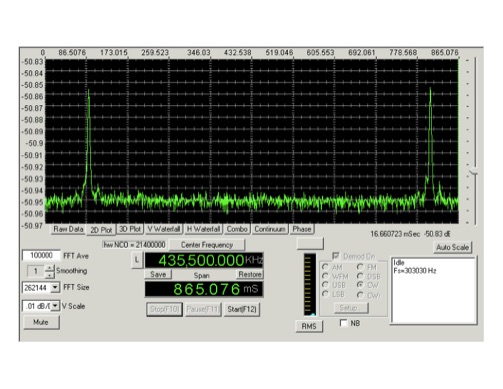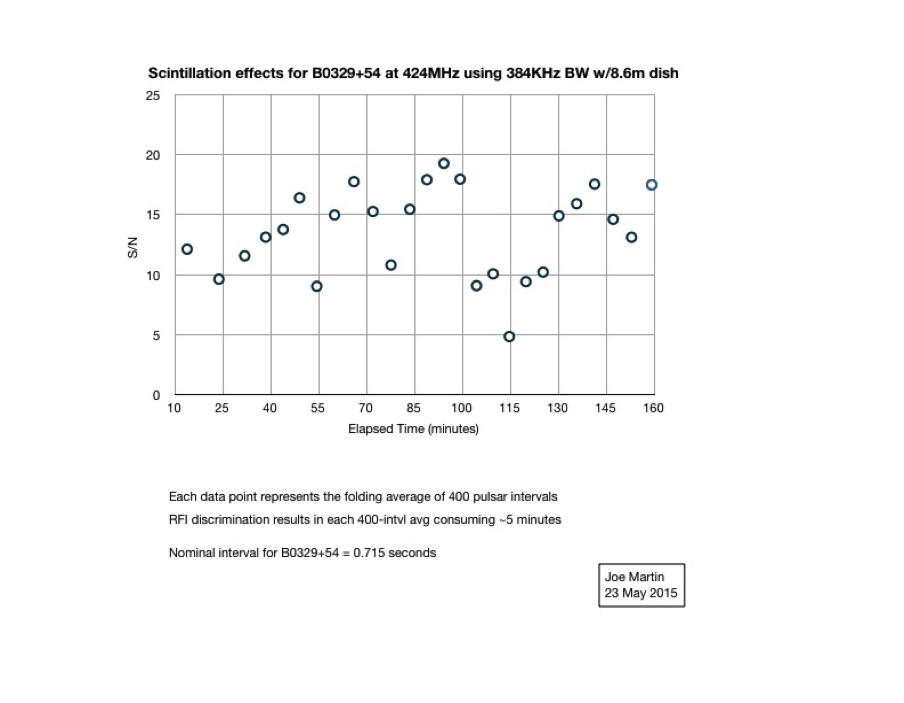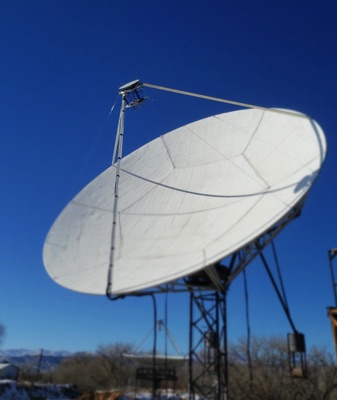Pulsar Observations
Dish configured for 70 cm pulsar observations
General: Pulsar radio astronomy is usually the domain of professional astronomers who use giant radio telescopes in order to capture the exceedingly weak signals that arrive at the Earth from pulsar stars. However, it is possible to detect some of the stronger pulsars using equipment commonly found at amateur radio moonbounce stations. Background information regarding pulsars can be found at numerous online websites, e.g., http://www.atnf.csiro.au/research/pulsar/psrcat/, so such background information isn't repeated here. The referenced site is an excellent source for both general and detailed information regarding pulsar stars. The site includes an extensive catalog of known pulsars and their properties and that site is utilized by K5SO extensively. The interested reader is encouraged to visit the website.

Above: SDR-14/SpectraVue display of the pulse profiles from pulsar PSR B0329+54 after signal averaging (time folding) synchronized time intervals of approximately 0.865 seconds each for a total continuous observing time of 6 hours at 435.5 MHz using a bandwidth of 250 KHz. TEMPO-derived Doppler corrections to the pulse sync frequency were made in real time every 10 seconds automatically via a GPIB connection to the sync frequency generator during the 6-hour observation time. Note that the peak intensities of the pulses from the pulsar are measured in hundredths of a dB relative to the signal-averaged noise floor.

Above: Intensity vs time emissions from PSR B0325+54 collected and averaged at 424 MHz at 384KHz bandwidth over a 2.5 hour observation period; single V-polarization data displayed. Data was collected and written to disk using a modified ANAN-200D radio then analyzed/averaged off-line later.

The instantaneous signal to noise (S/N) that one observes from a pulsar can vary dramatically and randomly due to scintillation effects, which arise from constructive and destructive interference of the rf waves from the pulsar as the various wavefronts pass through ionized regions of interstellar space. Below is a plot of S/N vs time, that we have measured, as an example of the scintillation effect.
